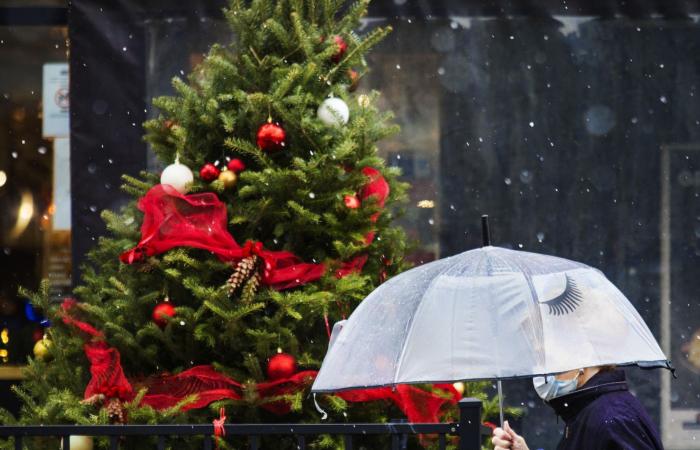Why were the Christmas festivities so dreaded that they were completely banned in the red zone? Because the holiday season family dinners bring together all the ingredients of these famous super-spread events that have contributed to the runaway of the pandemic.
Since last March, we have clearly seen that wedding receptions, religious gatherings, President Trump’s rallies, karaoke, have turned out to be events causing major outbreaks, where a few people, even a alone, have resulted in the contamination of dozens, if not a hundred, of others.
Several studies carried out in different countries have shown that 10 to 20% of primary COVID-19 cases are responsible for 60 to 80% of secondary cases, hence the role of super-spread events in the dynamics of the epidemic. .
Besides the presence of an infected person who is capable of transmitting the virus, special environmental conditions are required to allow a super-spreading event. Indeed, people must be gathered “in a closed and poorly ventilated room, be close to each other, and this for a fairly prolonged period”, specifies Dr Don Vinh, microbiologist and infectious disease specialist at the McGill University Health Center (MUHC).
“Most people who are infected, about 70% to 90%, do not infect anyone, do not cause secondary cases because they adhere well to public health measures, and also because of special biological factors, such as the fact that these people may project less droplets when they speak ”, continues Dr Vinh.
In addition, studies have suggested that the characteristics of droplets and aerosols vary from individual to individual. “The density, surface tension, viscosity, composition of droplets and aerosols can vary from person to person,” he adds. What is more, “some people produce more aerosols than droplets, and others more droplets than aerosols.” Viral load also varies from person to person. “Two people who are infected with the same strain of the virus and are in the same phase of infection can have different viral loads. Because of all these biological and physico-chemical factors, the risk of transmission therefore differs, ”he points out.
Conditions met
Although it seems that it is mainly adults aged 20 to 45 years, with usually high viral loads, who are responsible for the majority of transmissions, the conditions in which they are found, either in an enclosed place, in proximity to other people for several hours, are essential to allow the spread of the infection, underlines the Dr Vinh.
All of these conditions are precisely those that prevail in our traditional Christmas celebrations, notes the Dre Marie-France Raynault, head of the department of preventive medicine and public health at the CHUM. “Our parties are times that can promote transmission because people get together in closed spaces and let their guard down,” she says.
Our end-of-year celebrations “are events where all the conditions are in place for propagation, namely an enclosed space, which is the case in several houses which do not have much space. In addition, in December, we tend to open the windows less to save on heating. Also, under the influence of alcohol, people get closer, speak louder. However, we know that viral transmission increases if we speak loudly, if we sing or if we shout. However, this is what often happens in family gatherings, if we guess and everyone gets caught up in the game! She describes.
Orange and yellow areas
Such parties will be prohibited in the red zone regions for all these reasons. But they will be authorized with certain restrictions in areas in orange or yellow zone. All these restrictions, which have their raison d’être, will have to be followed to the letter if these regions do not want to become hotbeds of spread, in January, warns the Dre Raynault.
First, it is essential that people in the orange and yellow zones “respect the strict reduction in contact before the gathering (ie from December 17)”, so that the people who will gather have time to know if they are. infected.
It is also important that the two planned gatherings only take place between December 24 and 27 because people who would have been infected on December 24 are not expected to be infectious until December 27. “Ideally, the instruction should have been December 24-26 because there are people with an incubation period of two days, but the median is four to six days. If the second gathering takes place on December 29, which is outside the recommended dates, people who have been infected on December 24 could have become infectious, which would multiply the number of people who could transmit the disease to others, ”warns the Dre Raynault.
Watch video
These were the details of the news COVID-19: Our traditional Christmas celebrations are conducive to the super-spread of the virus for this day. We hope that we have succeeded by giving you the full details and information. To follow all our news, you can subscribe to the alerts system or to one of our different systems to provide you with all that is new.
It is also worth noting that the original news has been published and is available at news1.news and the editorial team at AlKhaleej Today has confirmed it and it has been modified, and it may have been completely transferred or quoted from it and you can read and follow this news from its main source.





